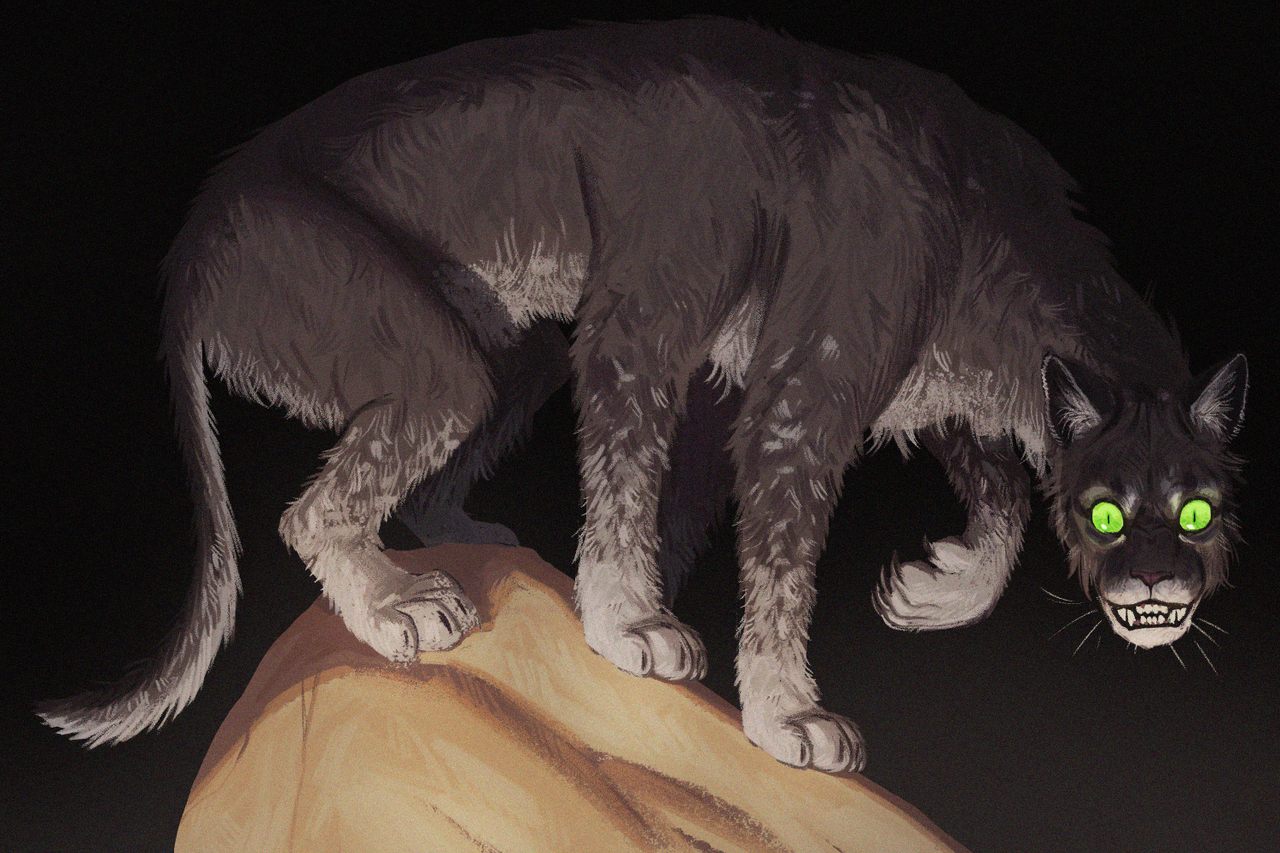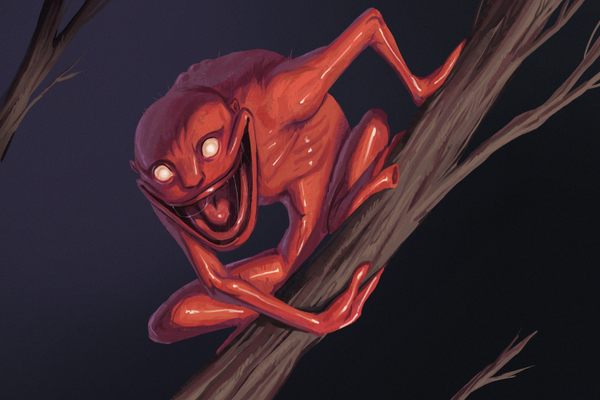The Child-Eating Wampus Cat Prowling the American South
Hide your dog; hide your children.
The wampus cat appeared in the American South, seemingly out of nowhere, at the turn of the 20th century. In the newspapers of the day, the frightening figment was, for most, nothing but a name associated with feral violence.
In those early days of the 1900s, “wampus cat” was an epithet for the local ne’er do well in Fort Smith, Arkansas, a mascot for an amateur baseball team outside of Houston, and the moniker of the “meanest, wildest, hardest bucking outlaw horse” ever seen in Flagstaff, Arizona. (Fifty bucks said no one could ride him.) The weird phrase seemed to originate in Scottish English: “Wampish” was slang for waving one’s arms about, though that benign image came with a sense of dangerous unpredictability. In the United States, “cattywampus” had come to mean “askew,” often absurdly so, but some in the mid-19th century also used it as a catchall for a mischievous, imaginary animal.
In Sherman, Texas, though, the beast became real. As the story went, “the great Wampus cat” had first been seen on the Oklahoma border around 1900, “the specter of some huge bobcat of past ages” that “shows up only on semi-moonlight nights in the summertime.”
It was real, too, in Quitman, Mississippi, where such a creature appeared after the floods in 1913, leaving behind 102 dog skeletons, completely stripped of fur and flesh.
And it was real in Arkadelphia, Arkansas, where a wampus cat terrorizing the community was finally caught in 1914. “No longer is the name ‘Wampus Cat’ used in referring to a mythical catlike being with a wicked disposition, for, [sic] in the woods of Clark County has been found the original animal,” an anonymous reporter wrote in an article printed throughout the South and Midwest. The myth of the wampus cat was becoming a reality.

In Arkadelphia, the imaginary creature had been “more savage than a lion” with menacing claws and a nine-foot-long tail as powerful as a kangaroo’s. This “real” wampus had the head and body of a cat with long black fur spotted with white. Its legs were short and stocky, with front feet that were a cross between a bear’s and a badger’s, and back feet cloven like a deer’s. “The tail is long,” the reporter acknowledged, “but not of the great length described” by those who had previously spotted it.
There was great curiosity in this odd cat, and the beast was exhibited in the town for three days before it escaped. “The woods are now being scoured for it and its mate,” the reporter noted. The legend-come-to-life would terrorize the South, in various guises, for the next several decades.
Writing in the 1950s, Vince Randolph, a folklorist who studied the Ozark region, just north of these early sightings, traced the birth of the wampus cat—and its feline kin, the swimming gallywampus and the whistling wampus—to the death of the North American cougar, “the most dangerous wild animal that ever really lived in the Ozarks.” Known as “panthers,” or “painters” in the local dialect, cougars had been the enemy of settlers throughout the 19th century, a constant danger to livestock and sometimes to children. By 1900, they were no longer a threat—they’d been hunted to near extinction east of the Mississippi—but that fear had not dissipated. Once, an eerie caterwaul in the forest was a warning that a panther lay in wait, now it was evidence of a wampus.
Not everyone accepted the creature’s existence. In fact, a “wampus” was usually something that someone else—someone much more gullible—believed in, but that did not lessen the panic when a wampus came to Knoxville, Tennessee, and its suburbs in November of 1918.
Dogs were dying in the Fountain City, their hearts and livers ripped out with something razor sharp. Then a mule was killed in the nearby neighborhood of Whittle Springs and some chickens met their end in Inskip, crushed with their blood sucked out. Some locals reported hearing the bay of a wild dog, others saw the tracks of a panther. Could it be a lioness that had escaped from a traveling carnival? When a zoologist from the University of Tennessee could not definitively identify the attacker, the hunt for the wampus was on.

On Thanksgiving morning 1918, some 75 men armed with shotguns, rifles, and even a few bow-and-arrows went searching for the animal, which had been described as gray with white spots and a long tail and able to jump 12 feet “at least” in the air, according to the Knoxville Sentinel. Others described it as “just the devil in the shape of a tiger, who had come here to scare some of the wicked folks into doing right.” No one claimed the $100 reward for a wampus carcass that day.
When a woman reported being attacked by an unidentified creature two days later, a local shopkeeper bought her torn dress and put it on display. “Large crowds have been around the window,” the Sentinel reported. Businesses had already been trading on the beast. In addition to the cash reward offered up by the newspaper, the person who killed the wampus would receive a Kodak camera from Kulhman’s Drug Store, $5 in gold from J.E. Lutz & Co. Insurance, and a woman’s tailored coat suit (“if a lady marksman kills the ‘varmint,’”) or a hat from Askin & Marine Co (if a man shot the creature).
The obsession lasted through Christmas—“Dear Mr. Santa…I want you to bring me a wagon and an auto [and] a gun so I can shoot the wampus”—but the sightings didn’t. By the new year, Knoxville was laughing about the hysteria.
Ninety miles down the road in Benton, Tennessee, though, the wampus was still real. A group of hunters had cornered a mysterious creature in a cave along the Ocoee River and after “one of the biggest battles that ever took place in this section” of the state, according to Polk County News, they caged the animal.
What had they caught? Several townsfolk went to see for themselves. “They all say that if it isn’t a sure enough Wampus, they don’t know what it is.”













Follow us on Twitter to get the latest on the world's hidden wonders.
Like us on Facebook to get the latest on the world's hidden wonders.
Follow us on Twitter Like us on Facebook